Deep Breathing Exercises
Table of Contents
What Is Deep Breathing Exercises?
Deep breathing exercises are a simple yet powerful technique used to promote relaxation, reduce stress, and enhance overall well-being. Breathing is an essential function of life, but many of us often take shallow breaths, especially during times of stress and anxiety. Deep breathing exercises, also known as diaphragmatic or abdominal breathing, involve taking slow, deep breaths that engage the diaphragm and allow more oxygen to enter the body.
These exercises have been practiced for centuries in various cultures and are a fundamental component of many meditation and mindfulness practices. The benefits of deep breathing extend beyond relaxation; they can also help lower blood pressure, improve focus, and alleviate symptoms associated with anxiety and depression.
In this fast-paced modern world, where stress and anxiety are prevalent, incorporating deep breathing exercises into your daily routine can be a simple yet effective way to find calmness and balance amidst the chaos. Whether you’re new to mindfulness techniques or seeking to enhance your existing practices, deep breathing exercises offer a natural and accessible tool to promote physical and mental well-being.
In the following sections, we will explore various deep breathing techniques and their step-by-step instructions, allowing you to integrate these practices into your life and reap their numerous benefits. So, let’s take a deep breath and embark on a journey of inner tranquility and improved health through the practice of deep breathing exercises.
The diaphragm is the muscles separating the belly and chest cavity. The diaphragm, which is attached to the base of the lungs, is hardly stimulated when breathing subconsciously. The result is shallow breathing patterns, poor ventilation, and reduced respiratory efficiency.
Deep breathing, on the other hand, works these muscles by allowing the stomach to rise and fall freely, resulting in better airflow and more efficient breathing. This allows a collection of physiological and psychological functions to take place.
While the emphasis is on activating the diaphragm, deep breathing affects the entire core, from the lower abdomen to the base of the throat, and includes three breathing patterns.
Abdominal breathing emphasizes diaphragm engagement while reducing ribcage activity. This kind of breathing facilitates greater respiratory efficiency.
Thoracic breathing stresses the growth and squeeze of the ribcage over the use of the diaphragm. This type of breathing spends more energy and is usually connected to intense physical activity and stress. Using it in combination with abdominal breathing, supports the body obtain more oxygen.
Clavicular breathing concentrates on the last stage of thoracic breathing, by pulling the shoulders and collarbone upward to allow more air into the lungs.
Deep Breathing
Most people accept short, superficial breaths into their chests. It can make you feel nervous and your power. With this technique, you’ll know how to take bigger breaths, all the patterns into your belly.
- Get comfortable. You can lie on your back in bed or on the bottom with a pillow under your head and knees. Alternatively, you can sit in a chair with your shoulders, head, and neck supported against the chair’s back.
- Breathe in through your nose. Let your belly fill with air.
- Breathe out through your nose.
- one hand on your stomach and the other on your chest.
- As you breathe in, feel your belly rise. As you respire out, feel your stomach downward. The hand on your belly should move better than the one that’s on your chest.
- Take three more full, deep breaths. Breathe completely into your stomach as it increases and falls with your breath.

Breath Focus
- Close your eyes if they’re open.
- As you breathe deeply, use mental images, words, and phrases to help you feel more comfortable.
- Take a few big, deep breaths.
- Breathe in. As you do that, suppose that the air is filled with a sense of relaxation. Try to handle it throughout your body.
- Breathe out. While you’re doing it, suppose that the air goes with your stress and strain.
- As you exhale, relax.
- continue for 10 to 20 minutes.
Equal time to inhale and exhale
In this exercise, you will shape how long you breathe in with how extended you breathe out. Over time, you will amplify how long you are capable of breathing inside and out at a time.
- Sit without difficulty on the ground or in a chair.
- Breathe in through your nostril. As you do it, remember to 5.
- Breathe out through your nostril for a complete of 5.
- Repeat numerous times.
Once you feel comfortable with breaths that last 5 counts, enhance how long you breathe in and out. You can carry out as much as breaths that last as long as 10 counts.
Deep respiratory benefits
- Deep respiratory additionally is going via way of the names of diaphragmatic respiratory, stomach respiratory, and walked respiratory. When you take a deep breath, the air that enters through your nostrils fills your lungs and expands your contracted belly.
- For a lot of us, deep respiratory appears abnormally. There are several reasons for this. For one, the body damages the respiratory in our culture.
- A flat belly is taken into consideration as attractive, so women (and men) manipulate it to keep their belly muscular tissues. This interferes with deep respiratory and regularly makes shallow “chest respiratory” appear normal, which will increase strain and anxiety.
- Shallow respiratory limits the diaphragm’s variety of motion. The decrease in a part of the lungs does not get a complete percentage of oxygenated air. That can make you feel short of breath and nervous.
- Deep gastric breathing stimulates a complete exchange of oxygen. That is, incoming oxygen has a beneficial effect on outgoing carbon dioxide. It should come as no surprise that it can lower or stabilise your blood pressure and slow down your heart rate.
The Role of Deep Breathing in Fighting Disease
- Cardiovascular Disease: Deep breathing is effective in reducing hypertension ( in hypertensive patients.)
- Emphasis: Empirical evidence, based on objective and subjective measurements, demonstrates the efficiency of breathing techniques in enhancing psychological and physiological stress.
- Anxiety and depression: Deep breathing can reduce anxiety and depressive symptoms in the general population and those with these clinical conditions.
- Disease of the respiratory tract: Deep breathing helps treat asthma and tuberculosis, and may contribute to tobacco withdrawal.
- Diabetes mellitus: Breathing exercises can improve quality of life and improve sympathetic responses in people with diabetes when combined with traditional therapies for cancer. Deep breathing techniques combined with chemotherapy and radiation therapy can improve fatigue, quality of life, sleep, and anxiety in cancer patients.
Progressive Muscle Relaxation
In this method, you breathe in as you tighten a muscle institution and breathe out as you launch it. Progressive muscle rest enables you to loosen up bodily and mentally.
- Lie without difficulty on the ground.
- Take some deep breaths to loosen up.
- Breathe in. Tighten the muscular tissues of your feet.
- Breathe out. Release the anxiety on your feet.
- Breathe in. Tense your calf muscular tissues.
- Breathe out. Release the anxiety in your calves.
- Work your manner up your frame. Tighten every muscle institution. This consists of your legs, stomach, chest, fingers, arms, shoulders, neck, and face.
Deep Breathing to Relieve Stress and Anxiety: Why and how does it work?
- The vagus nerve has been suggested to reduce the effects of slow breathing on the autonomic nervous system. Slow respiratory styles growth vagal reaction now no longer best withinside the respiration approach however additionally withinside the gastrointestinal and cardiovascular structures.
- The vagus nerve can provide interoceptive statistics from those structures to the primary frightened device, that is linked to mental and behavioral responses.
- This might explain the impact of deep inhaling each physiological and mental sphere.
- Different emotions had been related to various styles of respiratory, coronary heart hobby, and activation of both sympathetic (e.g., anxiety) and parasympathetic (e.g., happiness) frightened device responses.
- Evidence indicates that deep respiratory inhibits sympathetic hobby and will increase parasympathetic responses, which interprets as taking part in small distressing and extra superb emotions.
- Again, the cardiovascular system synchronizes with the respiration device all through the deep respiratory. This is defined as a low coronary heart charge and peak respiratory at a ratio of four or five heartbeats for every breath. This synchronization would possibly modify the autonomic fearful device, hence facilitating superb emotional states and lowering anxiety.
How to Do It
Deep Breathing Techniques According to yoga practice, pranayama contains four elements, which are used in different ways in different breathing techniques.
These elements are:
- Inhalation
- Exhalation
- Internal breath retention
- external breath retention
Following this tradition, it is highly encouraged to start by learning inhalation and exhalation to improve the power of breathing and the neurological system. This is supposed to allow prana to circulate via energy channels in the body.
Purifying, regulating, and activating nadis through breathing leads to physical and mental health. Once you have learned how to control these elements, you will be able to practice internal and external breath-holding. Retention is the most considered aspect of pranayama, as it represents the temporary suspension of prana and its relationship with pure consciousness.
Suggestions before practicing
- Wear comfortable clothes.
- Avoid exercising after eating, as eating puts pressure on your diaphragm and lungs, making it difficult to take deep breaths.
- Set a time and place where you can fully focus on your breathing exercises.
- Always use your nostrils for breathing.
- If nasal congestion prevents you from breathing freely through your nostrils, you can open your mouth slightly to improve ventilation.
- Clean your nostrils by blowing on a tissue before you begin.
- Sit in a comfortable position that you can support throughout the whole practice, or lie on your back.
- Keep your spine straight and avoid pushing the body.
Cautions
- Do not practice if you are feeling ill or sick.
- If you feel any discomfort during your workout, stop.
- Sensations such as tingling, heat, cold, itching, slightness, or heaviness can be experienced by healthy people.
- Seek advice from an expert if you are pregnant, have a medical condition, or have any problems before practicing.
Breathing Exercises to Learn Deep Breathing
The following breathing exercises are organized in advanced order. Each raises awareness and helps you move on to the next activity.
You might want to start by doing the first one or two for a few sessions and then include one more as you become familiar with the first steps.
1. Breath awareness
- .The Breath Awareness Exercise is a brief introduction to breathing patterns that help you slow your breathing and achieve a relaxed breathing space.
- Sit up straight or lie on your back and find a comfortable position that you can maintain for a few minutes.
- Release excess tension and slowly bring your attention to your breathing. You just have to watch your breathing. don’t change anything Observe how your body moves and feels as you inhale and exhale.
- Focus on the air that flows through you and feel the expansion of your chest and abdomen as your nose and throat connect to your lungs. Continue this for several minutes.
2. Three steps to deep breathing
- To experience deep breathing, we must first remember and experience the three types of breathing that accompany it For this exercise, it is recommended to lie on your back if possible.
- Put your right hand on your navel and your left hand on your chest. First, observe the natural flow of your breath for several cycles.
a. Abdominal breathing
- On your next inhale, be sure to direct the air toward your navel and let your belly expand and lift freely. Feel your right-hand rise while your left-hand remains almost still on your chest.
- Feel your right-hand drop as you exhale while keeping your stomach relaxed. Repeat this for a few minutes without straining your stomach, but allow it to expand freely and relax.
- After a few repetitions, return to normal breathing.
b. Thoracic breathing
- Without varying your position, you will directly turn your attention to your ribcage. With the next inhalation, think of purposely sending the air
- toward your ribcage instead of the belly.
- Allow your chest to spontaneously expand and rise, and move your left hand up and down as you continue to breathe. Breathe slowly and deeply through your chest without anxious your diaphragm. Keep your right hand almost static.
- Repeat this breathing pattern for several minutes.
c. Clavicular breathing
- With the next inhalation, repeat the thoracic breathing pattern, and when the ribcage is completely expanded, inhale a moment more, thinking of permitting the air to fill the upper section of your lungs at the bottom of your neck.
- Suppose the shoulders and collarbone increase gently to find some area for the extra air to come in. Exhale slowly, first ensuring that your collarbones and shoulders are level, then continue to relax your chest.
- Continue to repeat this for a few minutes. After some repeats, return to your natural breathing.
3. Yogic breathing
- Lay on your back and place one hand on your tummy and the other on your chest to perform this meditation exercise. As you gain more knowledge, you can try this in a sitting position.
- First, focus on natural breathing, as you practiced in the first exercise. Continue practicing her three stages of deep breathing one by one.
- On your next inhale, remember to direct the air toward your belly button, allowing your belly to expand and expand freely.
- Continue to breathe and feel the rest of the air being sent into your chest as it fully expands. Continue to inhale the remaining amount of air, you can by allowing the collarbone and shoulders to increase.
- Exhale slowly, first lowering your shoulders and collarbones, then relaxing your chest, and finally lifting your abdomen. Repeat this for a few minutes.
- Concentrate on moving your hands up and down with your breath. You can start measuring while inhaling and exhaling, keeping the same proportions. For example, you can count to 4 each time you inhale and count to 4 each time you exhale.
After a few repetitions, return to normal breathing
Breathing Exercise To Relieve Anxiety
Alternate-Nostril Breathing
In alternating nostril breathing (nadi shodhana), you control one nostril at a time while breathing through the other, alternating nostrils in a regular pattern.
- Put your right hand by bending your pointer and middle fingers into your palm, leaving your thumb, ring finger, and pinky extended.
- close your eyes or softly stare down.
- Inhale and exhale to start.
- Close the right nostril with your thumb.
- Inhale through your left nostril.
- With your ring finger, press your left nostril closed.
- open and exhale through your right nostril.
- Inhale through your right nostril.
- Close the right nostril with your thumb.
- Open and exhale through your left nostril.
- Inhale through your left nostril.
- Do up to 10 rounds of this breathing design. If you feel unsteady, clear both nostrils, breathe normally and relax.
It’s best to practice this type of anxiety-relieving breathing in a seated place to maintain your posture.
Belly Breathing
According to the American Institute for Stress, 20 to 30 minutes of “belly breathing”, also known as abdominal breathing or diaphragmatic breathing, each day can help reduce stress and strain.
See a comfortable place to sit or lie down.
- Place one hand on your upper chest and the other on your lower ribs.
- Squeeze your muscles to relax your stomach without pushing it inward.
- Breathe in slowly through your nose. Allow the air to flow down through your nose and feel your belly expand with your other hand. Then fall inward (towards the spine).
- Exhale slowly through slightly pursed lips. Notice the hands on your chest. It should be relatively still.
The frequency of the sequence depends on your health, but most people start with 3 and train up to 5.
Box Breathing
Box breathing, also known as Foursquare breathing, is very easy to learn and practice. If you ever find yourself breathing in and out to the rhythm of the song, you already know how to breathe like this
- Exhale to a count of four.
- your lungs empty for a four-count.
- inhale to a count of four.
- Continue to fill your lungs with air while you count to four.
- Exhale and begin the pattern anew.
4-7-8 Breathing
Also known as relaxation breathing, the 4-7-8 breathing technique has a natural calming effect on the nervous system. It is best to do this exercise sitting upright at first. once you get used to this breathing technique, you can do it while lying in bed.
- Place and hold the tip of your tongue on the edge of the tissue behind your upper front teeth during the exercise.
- Exhale fully through your mouth with a hissing sound.
- Maintain your breath for a calculation of seven.
- Breathe out completely through your mouth while making a hissing sound and counting to eight.
Lion’s Breath
Another effective deep breathing exercise is Lion Breath (Simhasana), a Sanskrit word for roaring like a lion. Helps relax facial and jaw muscles, reduces stress, and improve cardiovascular function.
The ideal way to perform this exercise is to sit comfortably, lean slightly forward, and place your hands on the floor or on your knees.
- Distribute your fingers as wide as possible
- Inhale through your nose.
- Open your jaws wide, stick out your tongue, and stretch it down toward your chin.
- Exhale vigorously and inhale through the base of your tongue.
- As you exhale, make a “hah” sound from the back of your stomach.
- Breathe normally for a few moments.
- Repeat the lion’s breath up to 7 times.
Summary
Daily DBE can result in beneficial physiological adaptations such as decreased blood pressure and sympathetic nervous system activity, reduce chronic stress and enhance acute stress events. It should be noted that the evidence for these claims is preferably limited. However, the simplicity, lack of adverse effects, and high cost-effectiveness (i.e., moderate to moderate benefit with minimal cost/time burden) of this technique make DBE a potential candidate as a large-scale intervention option for individuals with reduced blood pressure, stress, and anxiety, and whose workplace is an ideal environment to perform DBE daily.
Unlike traditional exercise strategies, DBE is popular with all demographics and poses few barriers to participation. Furthermore, DBE can run almost anywhere, consumes little energy, and has no negative impact on performance or productivity. The obstacles associated with custom formation (e.g. lack of motivation) and regular participation in DBE may be mitigated by employers dedicating resources to DBE and promoting a work culture that prioritizes the physical and mental health of employees. A smartphone application that guides users about DBE and provides educational materials on the health benefits of DBE can help improve adoption and compliance.
FAQ
Diaphragmatic breathing
It also reduces stress and helps solve problems related to eating disorders, constipation, high blood pressure, migraines, and other health problems.
This leads to over-breathing and can seriously mess with the mild balance of the oxygen-carbon dioxide exchange bringing position inside your body. Overbreathing or hyperventilation can cause you to expel too much carbon dioxide, which impairs blood flow to the mind.
You bring in more oxygen, your heart rate slows down, and your thoughts start to slow down. Deep breathing can also lower blood pressure and may support Relief of distressing symptoms associated with headaches and migraines.
As you exhale, imagine your breath clearing away stress, anxiety, and tension. Try to bring deep breaths for 10 minutes until you feel relaxed and stressed. boost the duration to 15-20 minutes gradually.
The benefits of deep breathing are:
Decreases stress, and increases calm.
Relieves pain.
Improves immunity.
Increases energy.
Lowers blood pressure.
Improves digestion system.
Helps correct posture.

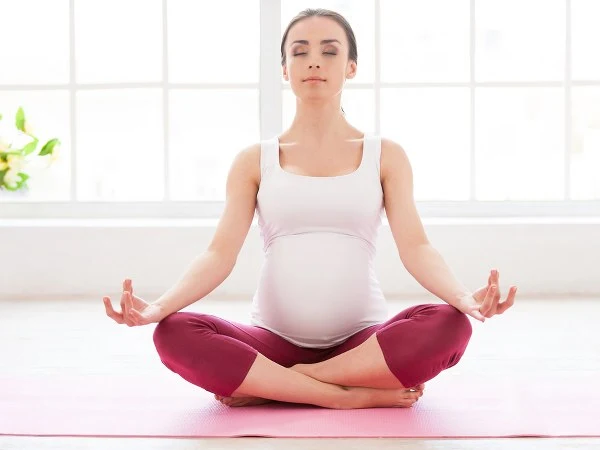
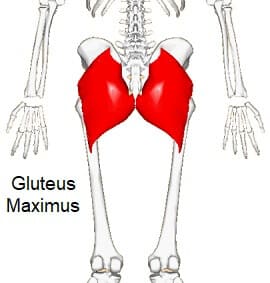
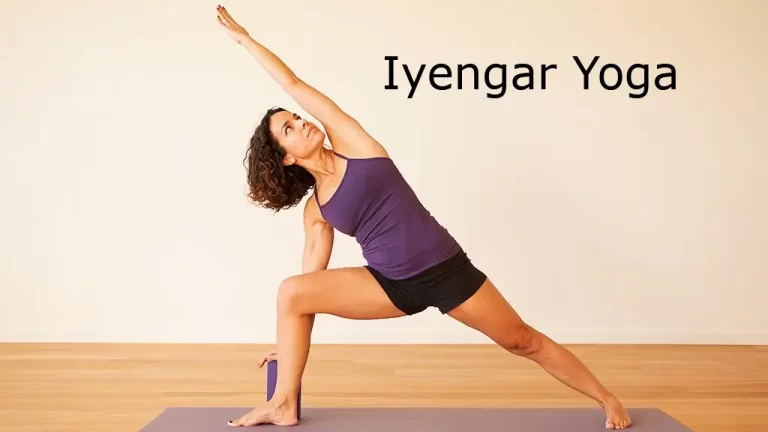

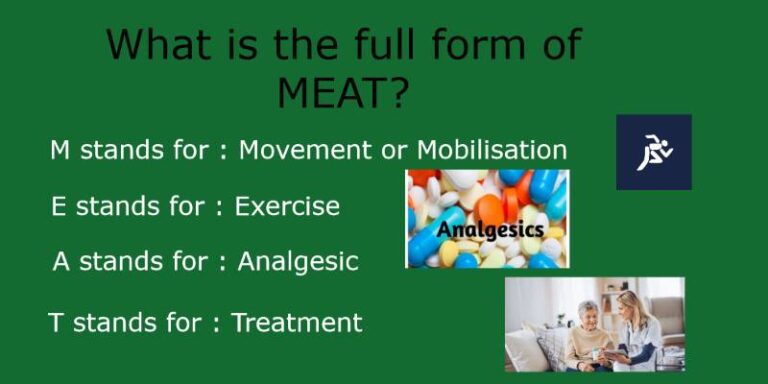
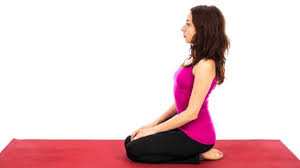
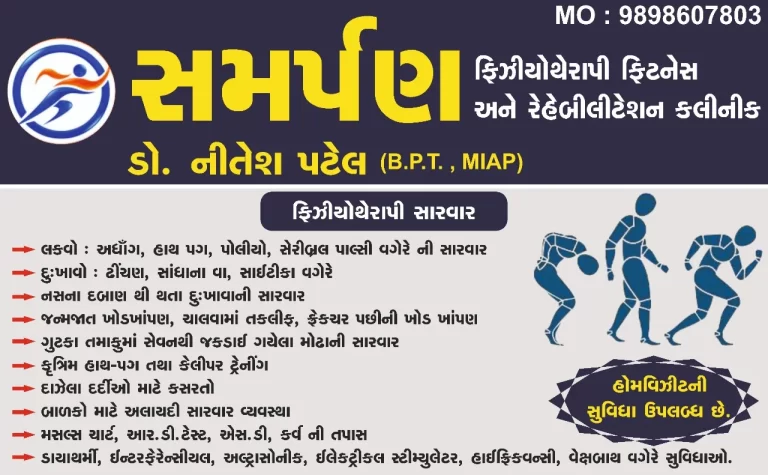
5 Comments